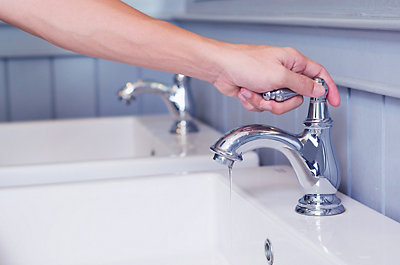Learning the Significance of Addressing a Leaking Faucet
Learning the Significance of Addressing a Leaking Faucet
Blog Article
Were you in search of facts and techniques on Should I Repair or Replace a Leaky Faucet??

Trickling taps may look like a minor inconvenience, but their influence surpasses just the inconvenience of the sound. From wasting water to sustaining unneeded financial costs and wellness threats, overlooking a trickling faucet can result in various repercussions. In this short article, we'll delve into why it's critical to resolve this typical home issue without delay and successfully.
Waste of Water
Ecological Effect
Dripping taps contribute significantly to water wastefulness. According to the Environmental Protection Agency (EPA), a solitary tap dripping at one drip per secondly can squander greater than 3,000 gallons of water annually. This not only pressures water resources but also influences environments and wildlife depending on them.
Step-by-Step Guide to Dealing With a Dripping Faucet
Tools Needed
Before trying to fix a trickling faucet, gather the essential tools, consisting of an adjustable wrench, screwdrivers, substitute parts (such as washing machines or cartridges), and plumber's tape.
Common Faucet Issues and Their Solutions
Recognize the kind of tap and the specific problem creating the drip. Common troubles include worn-out washing machines, corroded shutoff seats, or damaged O-rings. Refer to maker instructions or on the internet tutorials for detailed assistance on repair services.
Financial Prices
Increased Water Expenses
Past the environmental effect, trickling faucets can pump up water expenses considerably. The built up waste over time translates right into higher energy costs, which could have been prevented with prompt repairs.
Prospective Building Damage
Moreover, extended leaking can lead to damage to components and surface areas bordering the tap. Water accumulation can cause staining, rust, and also architectural concerns if left neglected, resulting in additional repair work expenses.
Wellness Problems
Mold And Mildew and Mold Development
The continuous visibility of dampness from a trickling tap develops an ideal environment for mold and mildew growth. These fungi not just jeopardize interior air high quality however likewise position health and wellness dangers, especially for individuals with breathing conditions or allergies.
Waterborne Diseases
Stationary water in dripping faucets can become a breeding ground for bacteria and various other virus, boosting the danger of waterborne illness. Pollutants such as Legionella bacteria thrive in stationary water, possibly causing significant ailments when consumed or inhaled.
DIY vs. Specialist Repair service
Benefits and drawbacks of Do It Yourself Repair Work
While some may try to take care of a dripping tap themselves, DIY repairs feature their own collection of obstacles. Without proper knowledge and devices, DIY efforts can worsen the issue or bring about insufficient repair work, extending the problem.
Advantages of Hiring a Specialist Plumber
Employing a professional plumber makes certain that the underlying root cause of the dripping tap is dealt with properly. Plumbing technicians possess the experience and equipment to identify and repair faucet concerns effectively, conserving time and reducing the threat of further damages.
Environmental Obligation
Specific Contribution to Preservation
Taking duty for repairing trickling faucets lines up with broader efforts towards water conservation and environmental sustainability. Every person's activities collectively make a considerable influence on preserving precious resources.
Lasting Living Practices
By focusing on prompt repair services and taking on water-saving habits, individuals add to lasting living techniques that benefit both present and future generations.
Preventive Measures
Normal Upkeep Tips
To stop dripping faucets, carry out routine upkeep such as cleansing aerators, inspecting for leaks, and replacing worn-out components without delay. Additionally, consider installing water-saving devices or upgrading to much more effective fixtures.
Value of Prompt Fixes
Resolving trickling taps as quickly as they're noticed prevents further water wastage and potential damages, inevitably conserving both water and cash in the future.
Influence On Property Value
Perception of Well-Maintained Residential Or Commercial Property
Preserving a residential property in good condition, consisting of attending to maintenance problems like trickling taps, improves its viewed value and value among potential customers or lessees.
Impact on Resale Value
Characteristics with well-maintained plumbing components, consisting of taps, command greater resale values in the realty market. Dealing with trickling faucets can add to a favorable impression throughout residential property examinations and settlements.
Verdict
Resolving a leaking faucet surpasses simple convenience; it's an important action toward preserving water, minimizing financial prices, and securing health and property. Whether via DIY fixings or expert assistance, acting to fix trickling faucets is a little yet impactful way to advertise liable stewardship of resources and add to a healthier, extra sustainable future.
How to Fix a Dripping or Leaky Faucet
A leaking faucet is one of the most common problems that homeowners encounter, but it being commonplace doesn’t make it any less annoying. The constant drip drip drip of a leaking bathtub faucet, showerhead, or sink tap can disturb your home’s serenity. Left neglected, a dripping faucet can also result in higher water bills and discoloration or mold growth in your sink or plumbing fixtures.
Fortunately, you don’t have to be a trained plumber to know how to stop a dripping faucet. With some basic tools, replacement parts, and a little patience, leaky faucet repair is a breeze. In this article, we’ll explain what causes dripping faucets and how you can fix them.
What Causes a Leaking Faucet?
Kitchen and bathroom faucets come in all manner of designs, but most involve some combination of valves, O-rings, seals, and washers. The O-ring is usually the weakest link, but any one of these pieces can wear down over time. Heat, moisture, temperature fluctuations, minerals, mold, and movement can contribute to warping and corrosion, breaking the watertight seal. This just comes with the territory of being a homeowner. Everything is always subject to wear and tear, and some component parts of your appliances and fixtures need to be replaced on occasion. At least replacement O-rings are cheap!
More rarely, dripping faucets can be a symptom of excessively high water pressure. Were this the case in your home, you would probably notice that the leak is not isolated to one faucet. Water pressure issues are harder to resolve on your own. We recommend contacting a professional plumber if you suspect your water pressure is too high.
How to Fix a Dripping Faucet
Pipe wrench or monkey wrench Allen wrench set Screwdrivers Old towel or rag Shut off the water.
Before you do anything, you need to turn off the water to keep from drenching your kitchen or bathroom. You should find a valve under the sink and against the wall. Once you’ve turned this valve, try turning the faucet on to confirm that the water source has been cut off.
If you can’t locate your local valve for the faucet you’re working on, you can always shut off the water to the house at the main valve. Of course, this will prohibit anyone from using the sinks, showers, or toilets while you’re working on the faucet that’s giving you trouble.
Plug or block the drain.
You’ll be disassembling the faucet and removing some small bits of hardware. Plug the drain with a stopper or rag to avoid the possibility of a small screw falling into your P-trap.
Take apart the faucet assembly.
There are several varieties of kitchen and bathroom faucets, each with its own manner of assembly. For detailed instructions on how to disassemble your faucet, you can refer to the fixture’s manual or contact the manufacturer. If you know whether you have a ball, disc, cartridge, or compression faucet, you can find detailed schematics online.
In general, you need to begin by removing the faucet handles. You might notice a small screw that you’ll need to remove with a screwdriver or Allen wrench. If you don’t see any visible securing hardware, it’s likely hidden under a decorative cap that can be unscrewed or popped off with flathead screwdriver.
Remove each piece methodically, consulting a schematic when necessary. Take notes or arrange the pieces in such a way to make it easier to correctly reassemble the faucet later.
Remove the cartridge.
Once you’ve removed the handles and securing hardware, you should be able to remove the valve cartridge or stem. Some cartridges will slide right out. Other faucet models will require you to loosen a nut with a pipe wrench before you can remove the valve stem.
Examine the exposed hardware.
With the cartridge or stem removed, inspect the component parts. Check the rubber O-rings for wear and tear. Also examine the seat washer for corrosion or other damage. These pieces are usually the responsible parties for a dripping faucet, but it’s worth inspecting the other component parts while you have the faucet disassembled.
Find replacement parts.
Once you’ve identified which faucet component has failed, find an identical replacement. Your local hardware store should have O-rings, seat washers, and other standard components in stock. If you have a luxury or uncommon faucet, you may have to contact the manufacturer for a replacement part.
It’s a good idea to take your old parts with you to the hardware store so you can compare them with the store’s inventory and be sure you’re purchasing the correct replacement.
Reassemble the faucet.
With your new parts in hand, reconstruct the faucet and handles. Don’t be tempted to overtighten screws or nuts. You might think this could create a better seal, but it can instead damage or bend a delicate part of the assembly and create a new problem for you.
Turn on the water and test the faucet.
The only thing left to do is test your work. Unplug the sink, turn the water back on, and try the faucet. Congratulate yourself on a job well done!
https://www.libertyhomeguard.com/how-to-fix-a-dripping-or-leaky-faucet/

I discovered that entry about Leaky Faucets: Why They Happen & What to Do About Them when scouting around the web. Don't hesitate to set aside a second to distribute this entry if you enjoyed it. Thank you so much for going through it.
Report this page